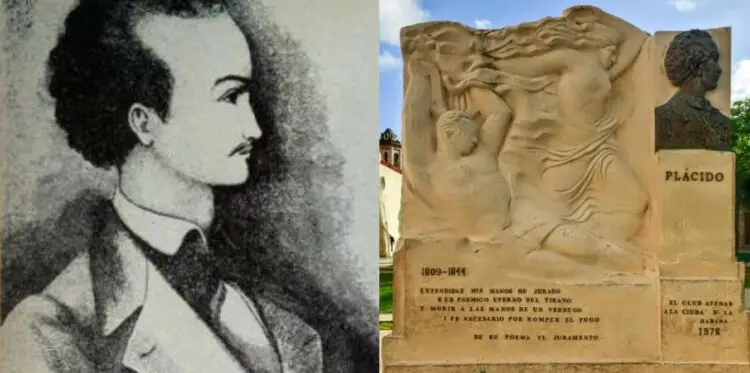MADRID, Spain.- The Cuban poet Gabriel de la Concepción Valdés was born in Havana’s Bernaza street on March 18, 1809. Known as Plácido, the pseudonym with which he signed his works, his father was the hairdresser Diego Ferrer Matoso and his mother the Spanish dancer Concepción Vázquez, who abandoned him at the Casa Cuna or Real Casa de Beneficencia y Maternidad in Havana.
He received the last name Valdés, like the rest of the children left in the institution, in honor of the founding Bishop. But his father took him out of there and gave him to his paternal grandmother to raise him. He suffered a childhood of poverty, aggravated by his condition as a mulatto in a society where the slavery of the black constituted the base of production and imposed prejudices. Although he did not have a stable education, he attended schools like Belén and El Ángel. In 1821 he began as a carpenter and studied in the workshop of Vicente Escobar, a prestigious plastic figure at the time, where he learned drawing and calligraphy.
In 1823 he began as a typographer’s apprentice in the printing house of José Severino Boloña and there he developed his poetic passion, but pressed by economic necessity, he dedicated himself to carving tortoiseshell combs, a more lucrative trade. In 1826 he moved to Matanzas accompanied by his master hairdresser, Don Nicolás Bota, who had opened a workshop on Jovellanos street. He returned to Havana with a reputation as a versifier and composer of commissioned letters and alternated his stays between the capital and Matanzas, where José María Heredia visited him.
Gabriel de la Concepción Valdés collaborated in serial publications such as Las Matanceras The Aurora and the hobbyand The Fenix of Sancti Spiritus. His works were very popular and were published in Mexico, the US, and Europe since the first edition of his works appeared in Matanzas in 1838. poems. In 1841 they published the booklet of poems the veguero, in Matanzas edition. On a trip to the center of the country in 1843, he was imprisoned for six months in the Trinidad jail, accused of being a conspirator. That year the pamphlet appeared The son of a curse
Imprisoned again at the end of January 1844, at the age of 34, he was included in the sad events known as The Ladder Conspiracy, unleashed by the Captain General of the Island Leopoldo O’Donnell to give an example of the danger of a black uprising in the manner of Haiti. Accused of being one of the ringleaders, on June 28, 1844, he was shot before thousands of spectators. In prison he composed “Prayer to God”, “Farewell” and “A mi lira”.
Plácido wrote poems of a popular nature and for family and friends parties, as well as to satisfy commissions. He was the most published poet of early Cuban romanticism in the 19th century and enjoyed great popularity.






